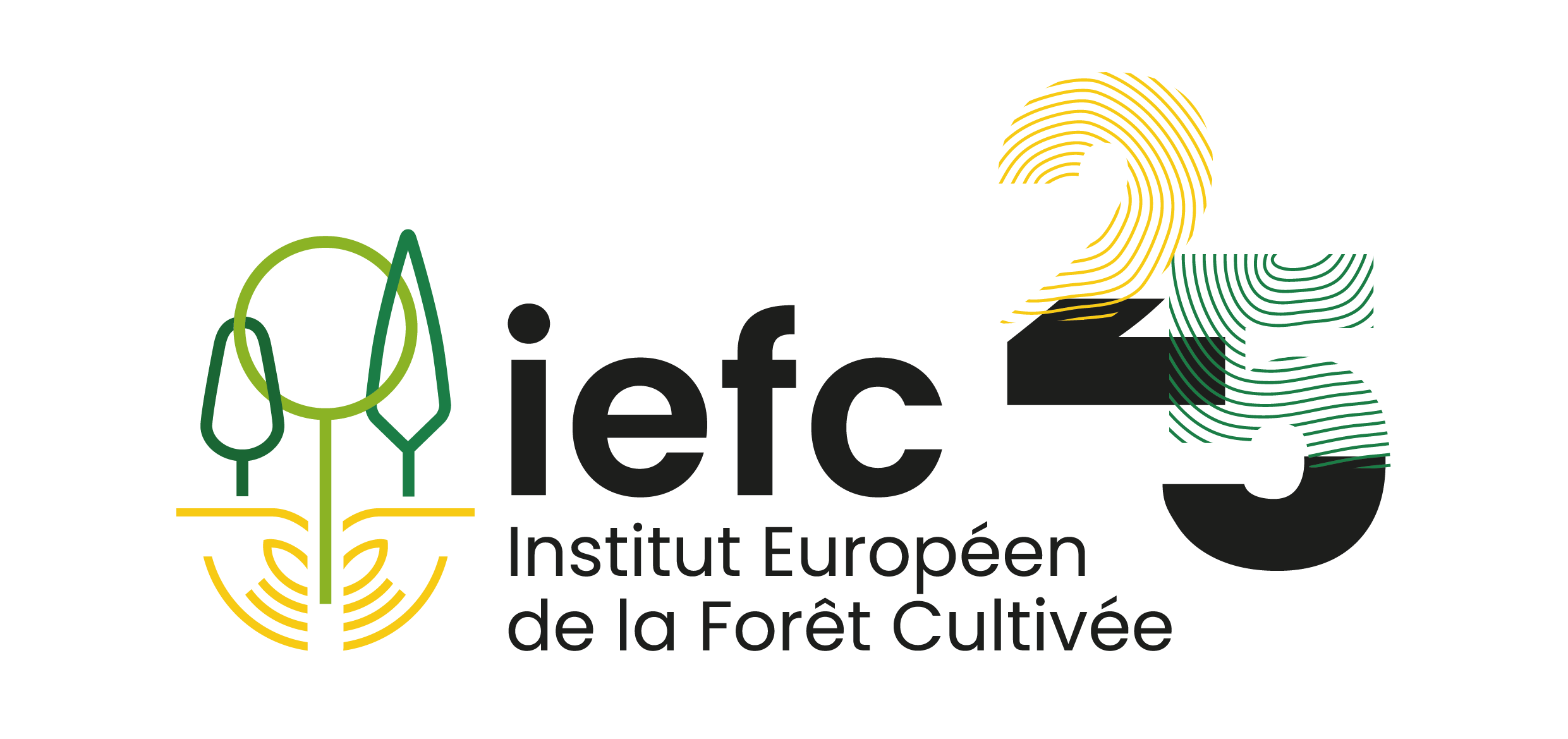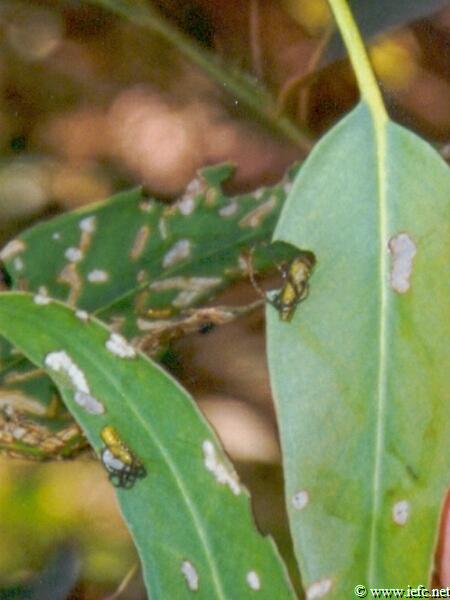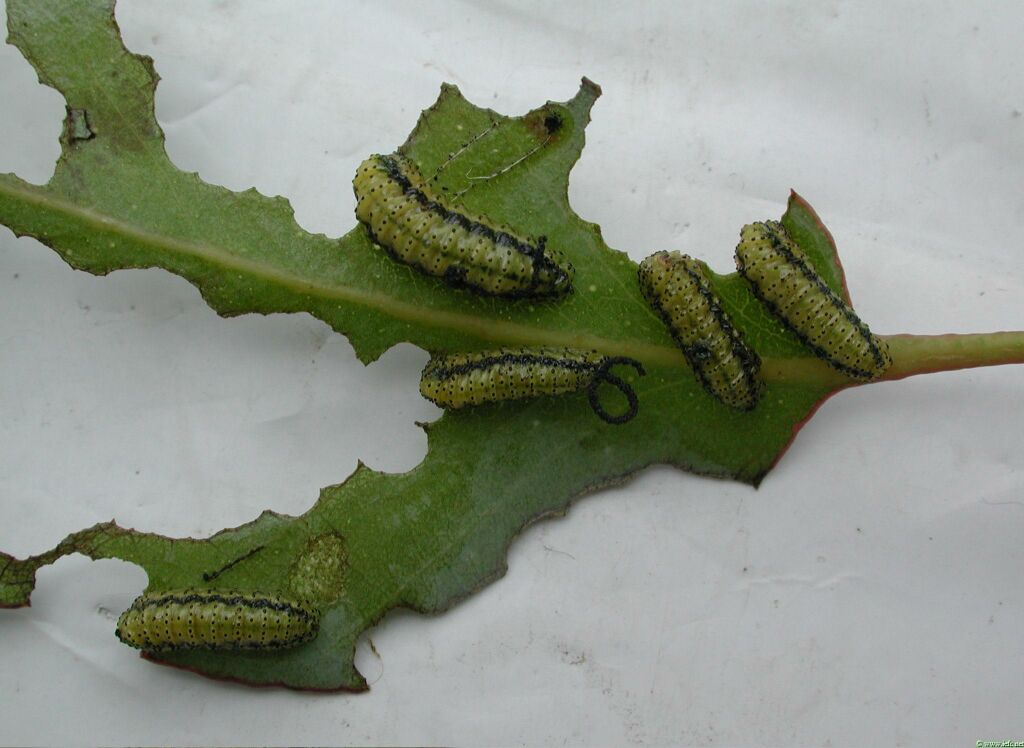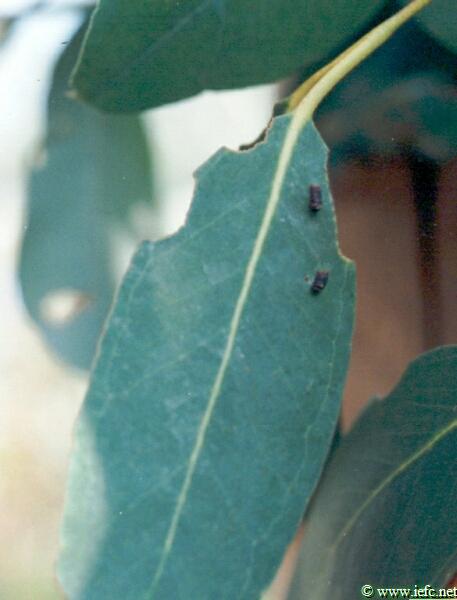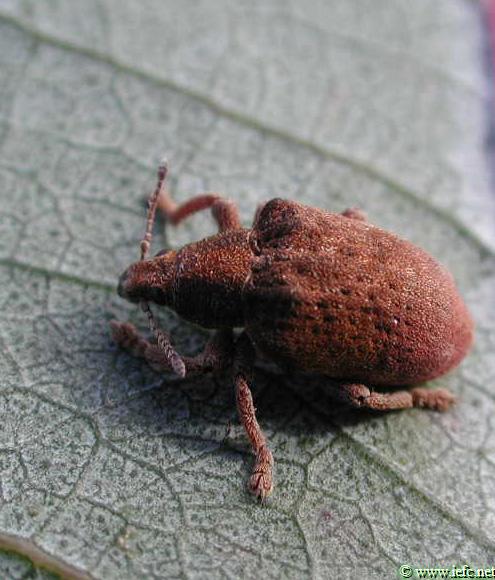Eucalyptus snout beetle
Gonipterus scutellatus (Coleoptera, Curculionidae)
Host tree
Most eucalyptus species.
Identification
- Leaves with deep, circular patterned chewed margins. Total leaf defoliation is possible.
- Feeding tracks on the leaf epidermis made by larvae (Photo 1).
- Dark to very dark brown egg masses on the leaves, frequently on newly expanded leaves (Photo 3). Egg masses are 2 to 3 mm long and 1 to 1,5 mm high, observable all year but more frequently in spring and autumn.
- In late spring and late autumn presence of yellowish-green larvae with two dark stripes along their body; larvae are curved in a C-shape. Larvae are present on both sides of the leaf. Older larvae produce long strings of excrements clinging to their bodies. (Photo 1 and 2).
- Reddish brown to dark brown adult weevils with an elliptical body of about 7 to 9 mm and a short rostrum (snout) (Photo 4).
- Bark girdling of twigs by adult beetles.
Damage
- Both larvae and adults eat leaves and can cause heavy defoliation, mostly of newly expanded leaves. Defoliation results in important growth loss.
- Defoliation can induce stress and increases susceptibility to secondary pests like the Eucalyptus longhorned borer (Phoracantha semipunctata).
- Adult feeding on bark can cause death of apical and fresh shoots and trunk deformation.
- In young leaf trees for floriculture, leaf damage destroys production.
Biology
- Normally there are two generations per year. In northern areas of Spain and Portugal the second generation may be partial or missing.
- Adult weevils are present all over the year with peaks in early spring and early autumn. In northern areas adults may overwinter in the soil or in bark crevices at the base of the tree.
- Larvae feed on young leaves mostly in late spring and late autumn.
- In the beginning of summer and winter mature larvae drop and burry themselves in the ground to pupate.
- Main factors reducing population densities are extreme climatic conditions, starvation and the presence of a natural enemy, the egg parasitoid Anaphes nitens, and some insect diseases like Beauveria bassiana and Aspergillus sp.
Risk factors
- Presence of host trees changing from juvenile to adult leaf.
- Susceptible eucalyptus species like Eucalyptus globulus, E. scoparia, E. camaldulensis, E. robusta, E. parviflora and E. tereticornis.
- Mild winters and relatively cool summers.
- Defoliation is more intense in young plantations growing on poor soils, where trees are not able to recover.
Distribution
- Originally from Australia, but has invaded most regions where Eucalyptus is grown, including in south-western Europe (France, Italy, Spain and Portugal).
Pest management
Monitoring
- In spring and autumn: observation of egg masses, larvae and leaf damage.
- In summer and winter: observation of leaf damage.
Preventive measurements
- Use of less susceptible eucalyptus species (E. botryoides, E. citriodora, E. saligna, E.sideroxylon, E. radiata, E. regnans, E. cladocalix and E. leucoxylon) or provenances (of E. dalrympleana and E. viminalis).
Curative control
- Biological control by multipoint releases of the parasitoid A. nitens; control can be achieved within 4 to 5 years of releases.
- Ploughing to expose pupae.
- Chemical control with contact and ingestion insecticides can be used in nurseries or seed orchards. In forests their efficiency is questionable and forbidden in Portugal and France. In Spain Flufenoxuron is registered against this species, treatments should be restricted to young plantations with a high attack and growing on poor soils where defoliation is very intense and trees are not able to recover. It should be done in spring when most eggs have hatched.
Climate change
- The effects of climate change are not easy to predict for this species. While milder winters in southern Europe may favour the beetel, hotter, hot summers may hinder it. <i> Gonipterus scutellatus</i> may be more indirectly affected by climate change through changes in tree species selection since damage strongly depends on the host species.
